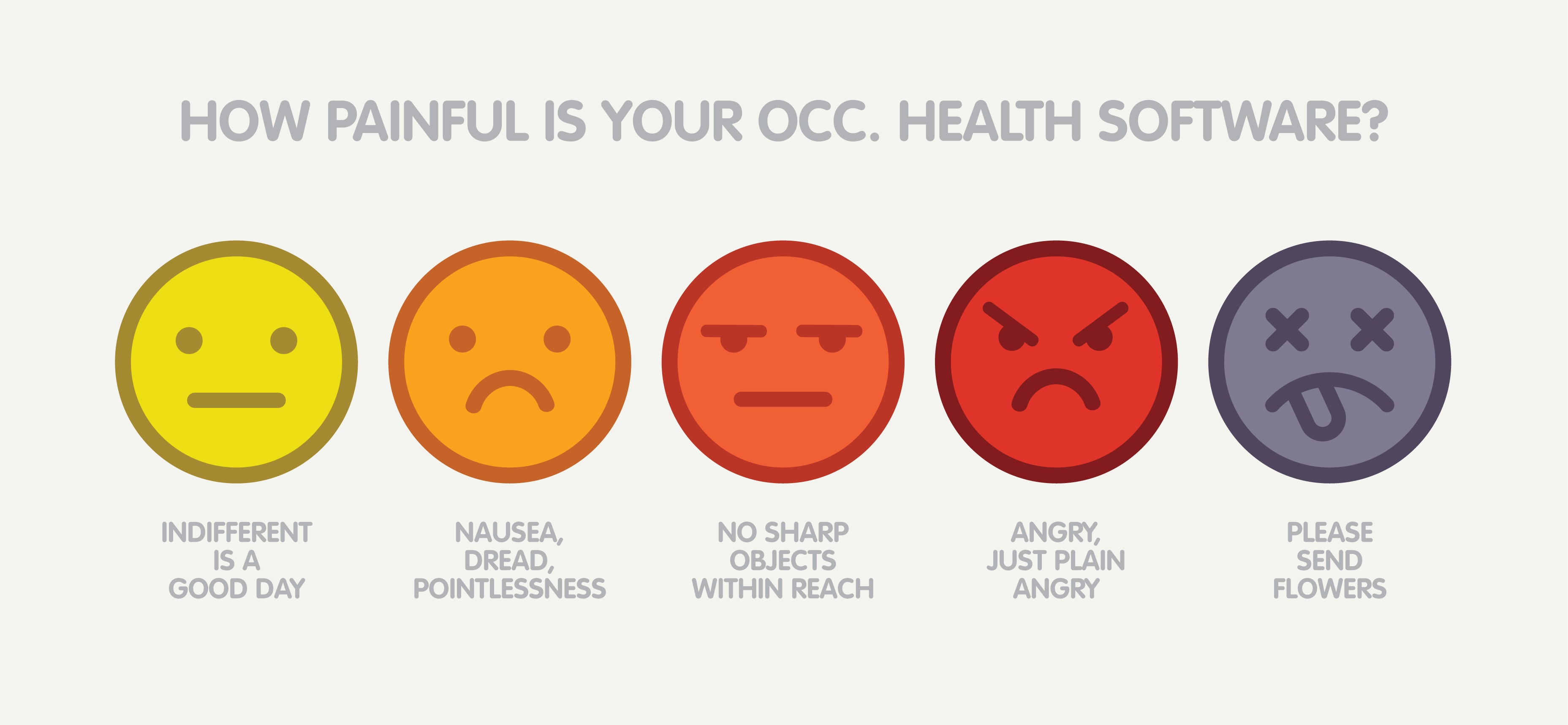Making the occ health switch
By Jeff Donnell on Oct 3, 2017 3:23:58 PM

When deploying the Enterprise Health occupational health IT solution, we generally replace another commercial application that failed the client in some form or fashion. Those failures are not mere minor letdowns — and unfold over an extended time period.
One of our newer clients described their incumbent solution as "garbage hung on a screen." Not exactly a ringing endorsement.
As we attend conferences and interact with prospective clients, we hear unvarnished tales of woe regarding occ health IT vendors and their products. These are not run of the mill “deployment took longer than we expected” or “service could be better” comments. We’re talking visceral reactions from medical directors and onsite employee clinic administrators who speak of wanting to gouge their own eyes out or strike themselves in the head repeatedly with a blunt instrument when they log into their occ health “solution” each morning.
Experience is a great teacher, and the marketplace is providing lessons on what not to do. We are passionate about learning from our own mistakes and avoiding the competitive errors of omission, commission and judgment that clients and prospects share with us. As the bar has been set far too low, this includes avoiding the temptation to do only marginally better. We are aiming high with a focus on sharpening our skills and improving our product offering to meet the expectations and support the aspirations of large employer clients.
We have also studied what it takes for companies to make the switch from one occ health IT vendor to another — carefully observing the struggles of prospective clients who wrestle with the decision, and the approaches employed by clients who have moved from legacy applications to Enterprise Health. Our goal is to help streamline what can be a challenging process.
To be clear, most of our clients are leaving behind not only a commercial application, but a cobbled together mix of paper, spreadsheets and homegrown databases they have amassed to manage employee health and compliance. To make these disparate tools work, they develop work-around processes and "make it work somehow" workflows — creating a culture of forced accommodation designed to overcome the limitations they are living with. While the inertia that builds up around this culture is negative, that inertia is nonetheless a powerful force to overcome.
Over the next few months, we will post more content — sharing what we have learned about making a move from one occ health IT system to another one. We have also produced two companion documents. One is called making the occ health switch — five things to consider when replacing occupational health software.
The other is a proceedings document from a presentation made by Dr. Richard Wittman, medical director at Stanford University. His presentation, Selecting an Occupational Health IT Solution — the Stanford Experience, was delivered at the 17th Annual Congress on On-Site Employee Health Clinics.
Together, these documents provide a high level overview from a vendor perspective and a practical process guide from the client point-of-view. If you like what you see, explore what the Enterprise Health solution can offer your organization.
You May Also Like
These Related Stories

Making the occ. health switch — acknowledge your pain

New functionality speeds entry of respirator fit testing data for OEHR users

